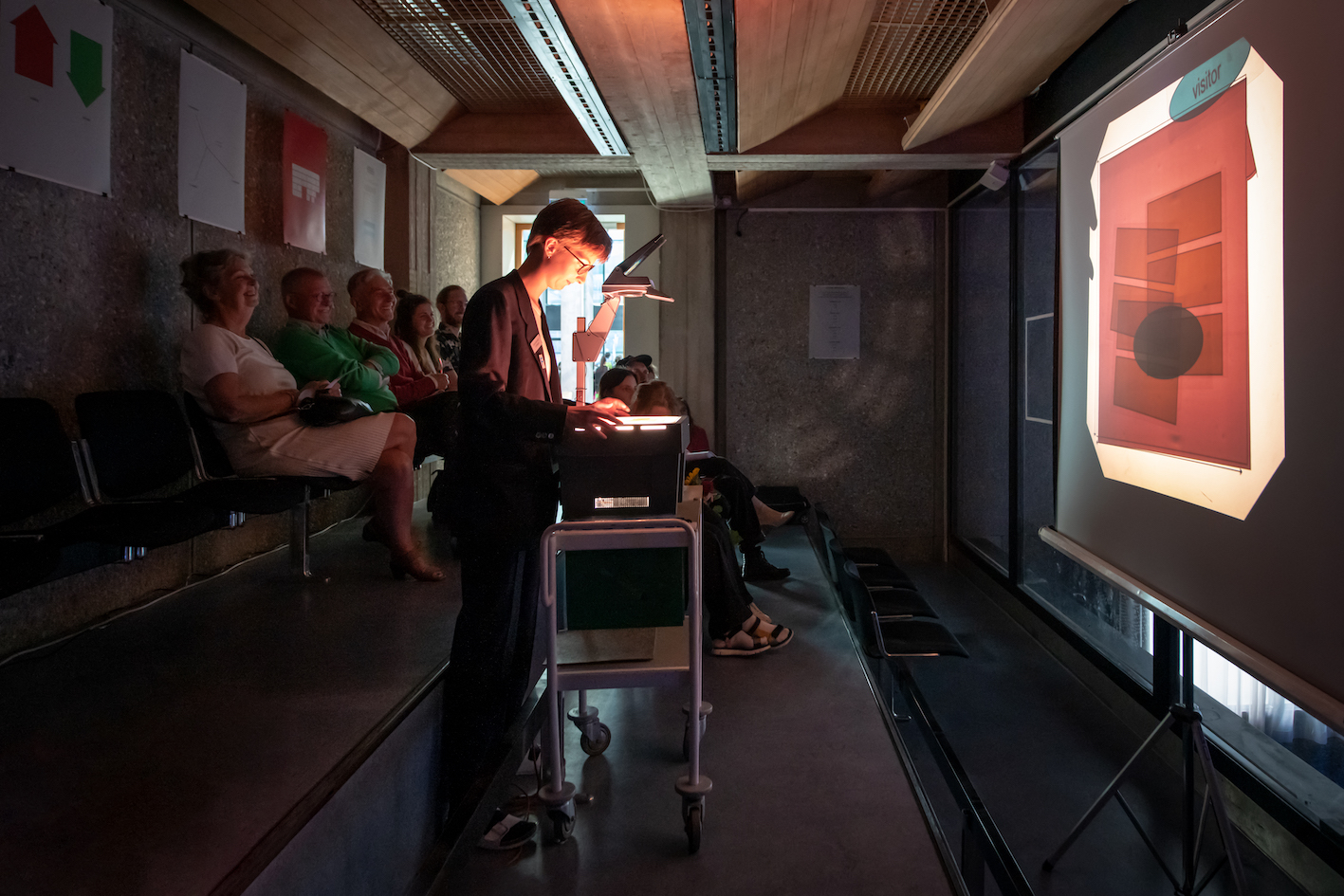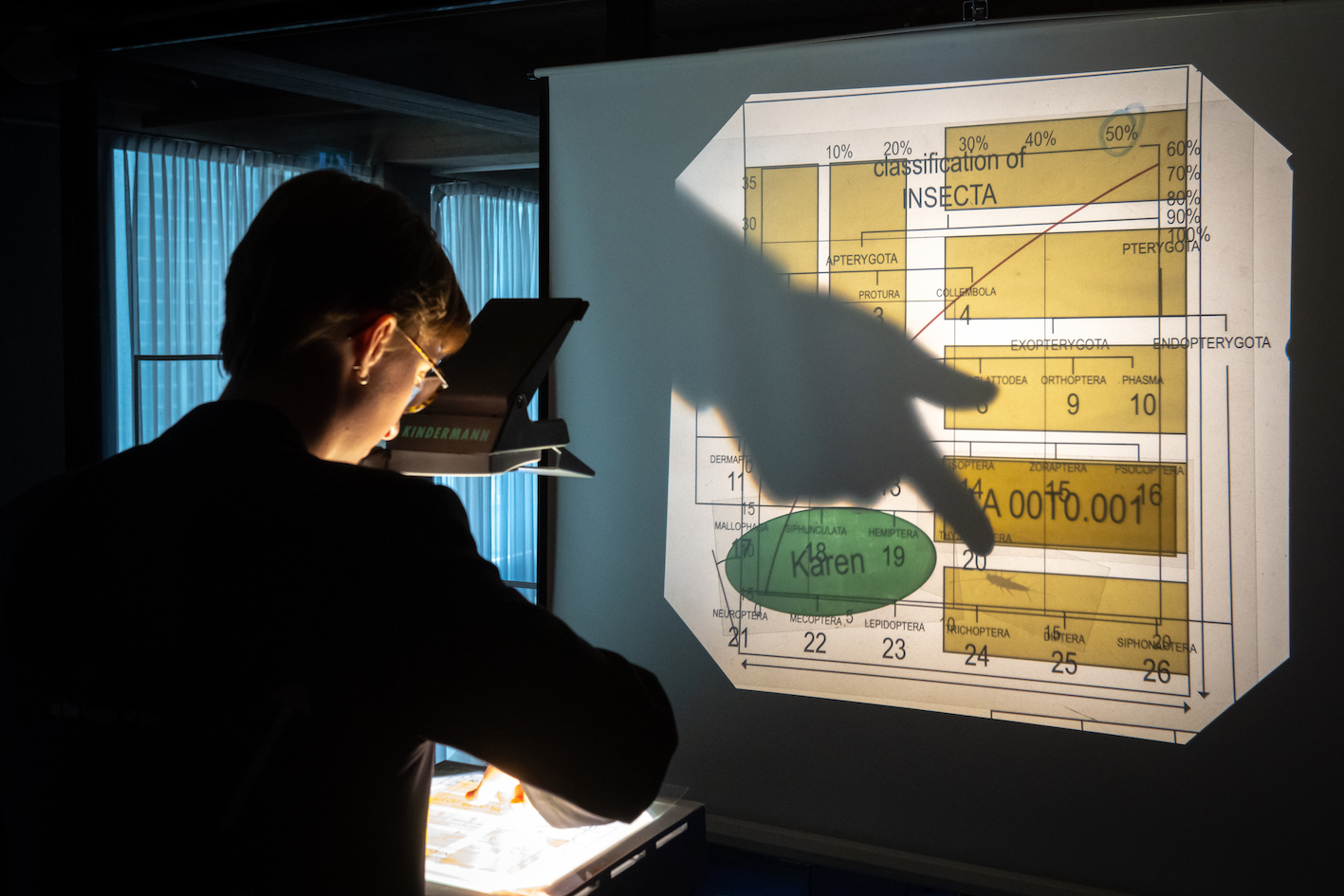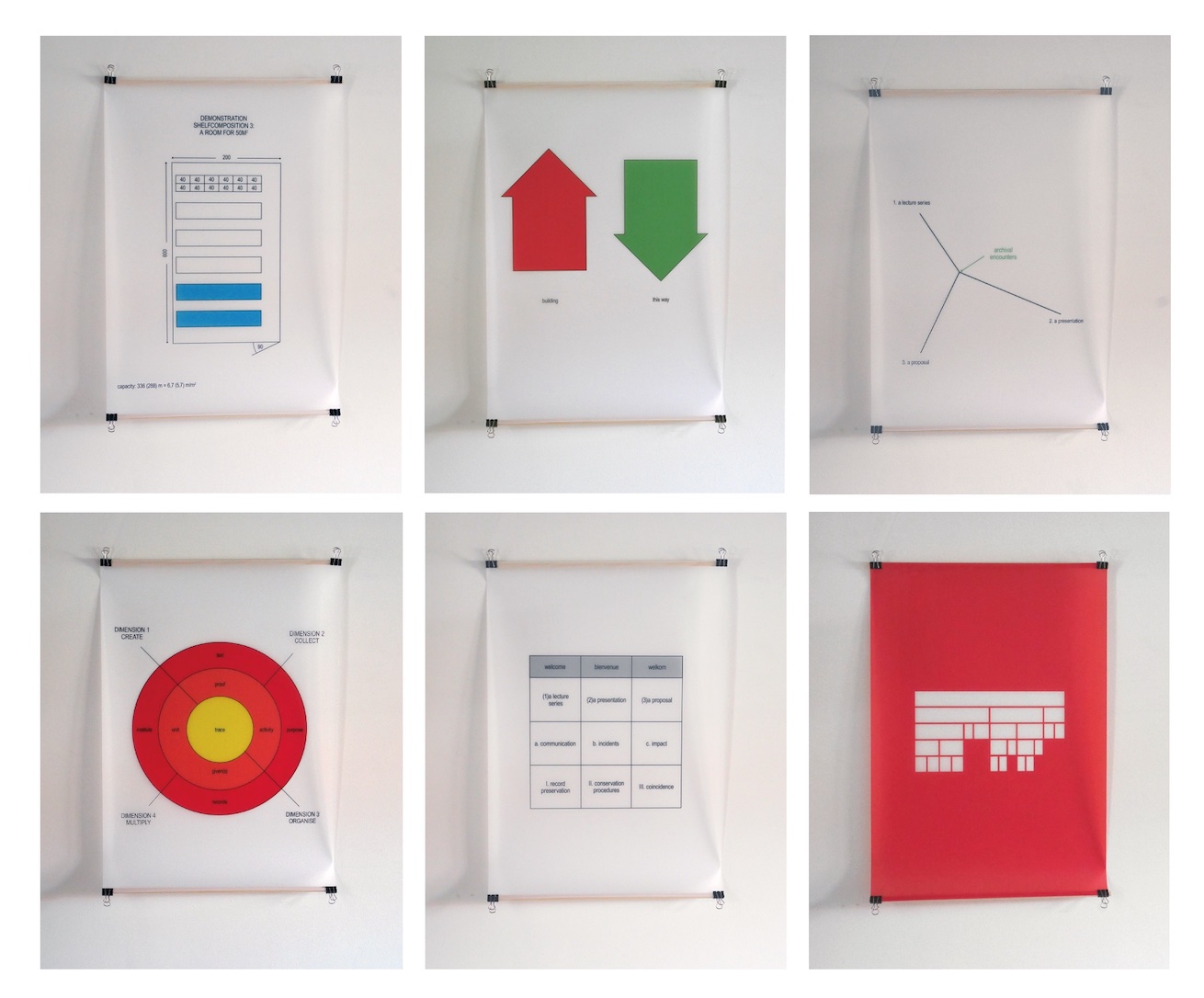Archival Encounters
Performance (15"00) with trolley, overhead-projector, transparent slides, A4 hanging folders, A2 posters.
Through short observations, a visitor tells her day in an archetypical archive. The visitor meets the archivist, named Susanne who shows her around. Yet it is not the first time the visitor goes to an archive, and she keeps her eye open to the dynamics and paradoxes happening around her. The visitor experiences the archive as an entanglement of different meanings, surviving in a confused condition, balancing between the dynamics of consultation and conservation.
“I don’t trust archives,” Pia Jacques states without hesitation. I’m reminded immediately of artist and administrator Rita Keegan, who, in the 1970s, upon her departure from the Women’s Slide Library, London removed a selection of slides from a sub-archive she had started: that of Black women artists. Left in the hands of an all-white staff, Keegan didn’t believe these slides could be conserved properly. However, her worry wasn’t one of a material nature, it was one of context. I tell Jacques of Keegan, who perfectly complicates what the archival impulse is in the first place, and ask her about how an archive could conserve not only physical evidence—photographs, documents, supporting matter—but contexts too, i.e., those micro-histories that accompany such material relics, or, alternatively, those which don’t but should.
Archive management, by nature of being an administrative process, is burdened with an inherent bureaucratization. This is not to put blame on the archivist or the administrator, prone to human error simply by nature of being human, but rather on the administrative processes which govern and therefore tend to a hierarchy of needs over others. For example, as Jacques notes in writing around her work—her own context conservation, as it were—“the archive relies on a harsh selection process, in order to keep the archive from drowning under its own weight.” The material conditions of the archive therefore pose a contradictory threat to the archive itself: it is impossible to archive everything and, therefore, impossible to trust that which is archived.
But threats to the archive come from other directions too. Take an archivally invasive species like the common silverfish, who eat their way through precious papers. Prior to beginning her graduation project, Jacques had done research on archive destruction—both incidental, in the case of silverfish, and intentional, looking at the differing ways to obliterate archival evidence.
Born from this research, Jacques’s graduation presentation takes the form of a lecture performance that fictionalizes instances of threat facing the archive: the aforementioned silverfish; a record getting filed in the wrong place; and an administrator—namely “Karen”—sending the document-seeker in the wrong direction and down an architectural rabbit hole. The kinds of mismanagement that plague the archive are rife in this tale.
Jacques calls these “archival encounters,” and further notes that they document “the influence of coincidence in the context of record preservation.” She was not wrong when she stated she distrusted archives; this feeling is at the heart of her practice. But still, as with things that don’t often make sense or which seem comically complicated in unnecessary proportions—things like bureaucracy—an impulse to understand infests her practice like a silverfish, nibbling away at the edges of conservation processes, to find another way in which to enter the archive.
Text by Isabelle Sully




